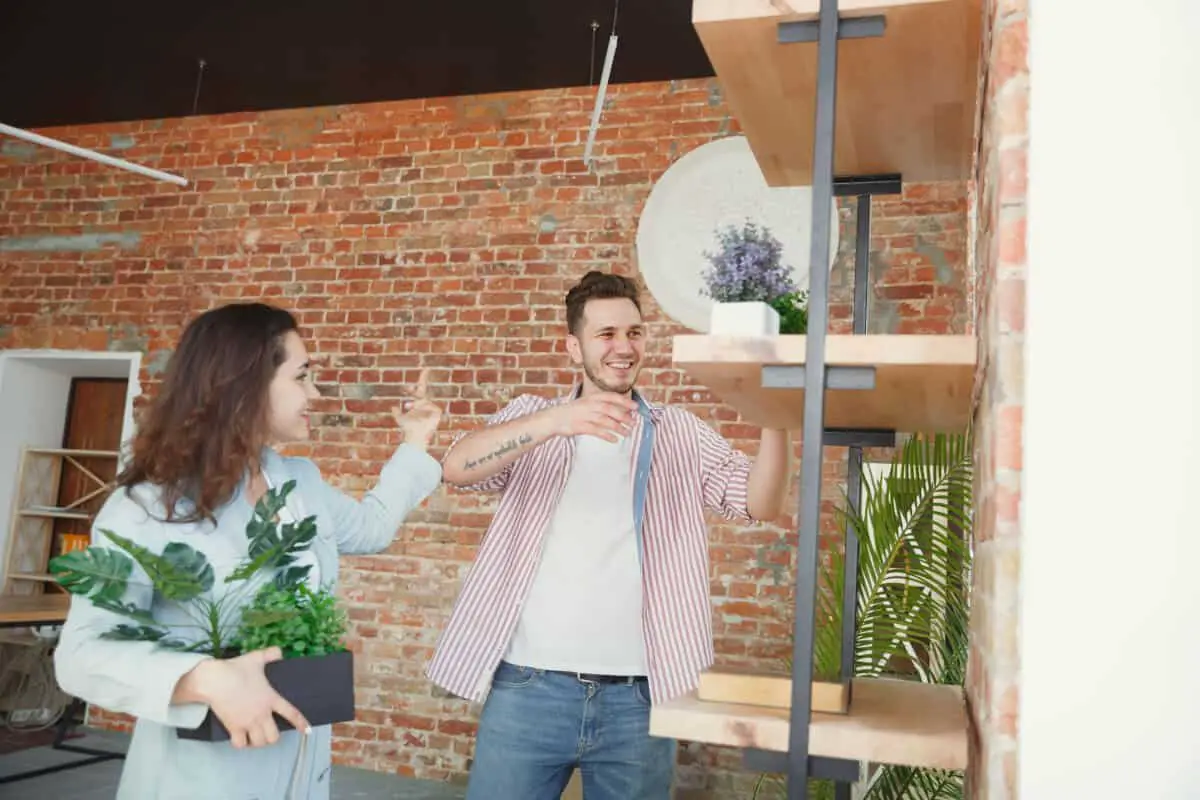I was never one for Fung Shui, and I prefer to be able to rearrange things every couple of months. To me, it makes it feel like it is a new space with fresh energy, and I like to add a little excitement to an otherwise boring home. Although with indoor plants, I started to wonder if this would be an issue for them. I wondered if moving them might hurt them or even kill them.
Is it ok to move indoor plants around? Yes, as long as the plant’s needs are still being met, it should be fine. Plants may not care about the view, but they will care about how much light, heat, and water they are getting. You can’t just put a plant that needs a lot of light into a bathroom that gets very little.
While Fung Shui is supposed to help balance the energy in a room, some people, like myself, prefer to rearrange things on a regular basis. I have found that as long as you are mindful of the plant’s needs, then moving them is ok too. Certain concerns should be taken into consideration, such as:
- Lighting
- Accessibility
- Room
Before You Start Moving Your Plants
Some plants are not into getting moved around all of the time, so this was something I needed to keep in mind when I get into the mood to start rearranging things. I needed to take every single plant, each individual species, into consideration. Not just their lighting needs but also things like temperature needs as well.
While hardier species of plants can handle the adjustment needed to be moved regularly, some more delicate strains a move might be too much of a shock to their system and it could kill the plant. In nature, plants don’t usually get moved, and this is how they expect to live indoors as well. So taking into account how delicate a plant is, may save you some heartache.
When you are moving plants is a good time to repot them as well, so I wanted to make sure that if I was going to be moving plants that I had some larger pots on hand as well. This would also be a good time to consider things like fertilizer to help them adjust to the move. I needed to check for drafts as a sensitive plant would not do well with drafts.
Any plants I moved I always took the time to check the roots, make sure it was healthy and could handle the move. I wanted to verify that it had the room needed in the pot that I was using and that if it needed more room, I could provide that as well.
I may have looked like a goofball going around and checking the temperature in different parts of my house and different areas of the same room, but I wanted to make sure my more delicate plants didn’t get shocked by a temperature change. By taking the extra time needed to ensure my plants didn’t get shocked helps my plants survive a move better.
Check the Lighting
Light is as important to a plant as food is to a human, reason being is a plant needs light to make energy. Photosynthesis is the process where a plant uses light to convert carbon dioxide into energy, or carbohydrates and oxygen. At night, or in darkness, plants will breathe oxygen and use carbohydrates for energy.
Some plants require more energy, thus requiring more light. While a plant can survive for a week or two in lower light, it can’t survive for a long time this way. So if you are using natural light for a plant, then they do need to maintain that natural light source. If, however, you are supplementing that light with artificial light, they will be ok as long as they still have access to it.
Moving plants near an unused window or sliding glass door is always a good option. Taking advantage of the wide variety of hanging planters available can also help to make good use of any natural light that comes into your home as well.
For areas that I wanted to leave a plant for more than a week that didn’t have the right light, I would set up full spectrum grow lights to help augment their lighting. Sometimes this required hanging a new light, but usually, it just meant changing out a bulb close by that can provide the light they needed.
Can You Easily Access Your Plants?
Indoor plants need to be checked on a regular basis to make sure they are healthy and thriving. They also need to be watered regularly, which you can’t do if you can’t reach them. If you have to reach over things and do your best impression of a contortionist just to water your plants, then they are probably not getting the amount of water and care they need.
This needs to be a primary concern when deciding on where to move your plant to. While a spider plant may look nice on top of an eight-foot tall bookshelf, if you have to get a step ladder out just to water it, then maybe that wouldn’t be the best option for it. Being able to easily access your plants is vital when deciding on a new place to display them.
On the other end of the accessibility scale is if household pets can access the plants as well. I have owned a dog or two that were a threat to any plant that came into my home. It was not even because they wanted to eat the plants, but because they loved digging in their dirt and they had no issues with digging in dirt that was in my home.
So making sure a plant is where you can reach it, but where anything that likes to dig can’t, needs to be something to take into consideration whether you are bringing a new plant home or just rearranging existing plants. Even if an animal does not intend to damage the plant, just the claws against the roots can cause irreparable damage to them.
Is There Enough Space?
Room for a plant actually means a couple of things — not just a place for it to rest in a pot, but also the pot itself. If you plan to move a plant that has been sitting in the same area for a while, now might be a good time to see if that plant might need a bigger pot. Keeping a plant in a pot that is too small can stunt the growth of the plant, which is not healthy.
If you do plan to move a plant, repotting it as needed at the same time might be a good idea, so the plant has more room to grow and thrive. In this way, you can ensure that wherever you plan to move the plant to next would be able to accommodate the new pot rather than the existing pot.
This would give you a chance to be able to check the roots when you repot the plant as well. Verify that the roots look healthy and are not being stunted. While this is something that should be done on a regular basis since most plants are constantly growing, taking the time anytime you move them to look at the roots is just a good rule to follow.
If you find that you don’t have the room you thought you did, you may need to consider relocating the plant to another home.



Subscribe To Our Newsletter
Join our mailing list to receive news and updates. Don't worry. We will not smap you ;)
You have Successfully Subscribed!